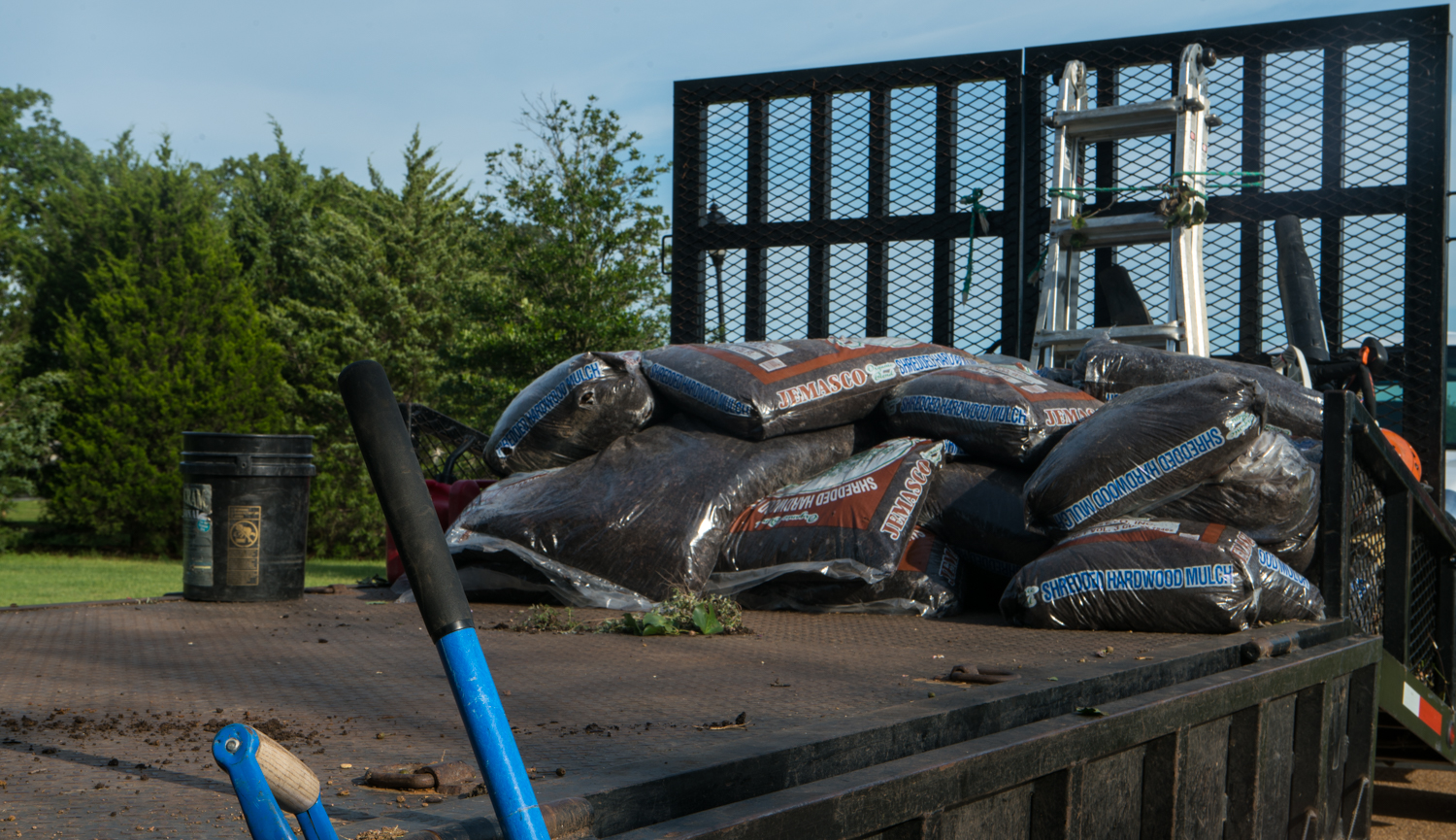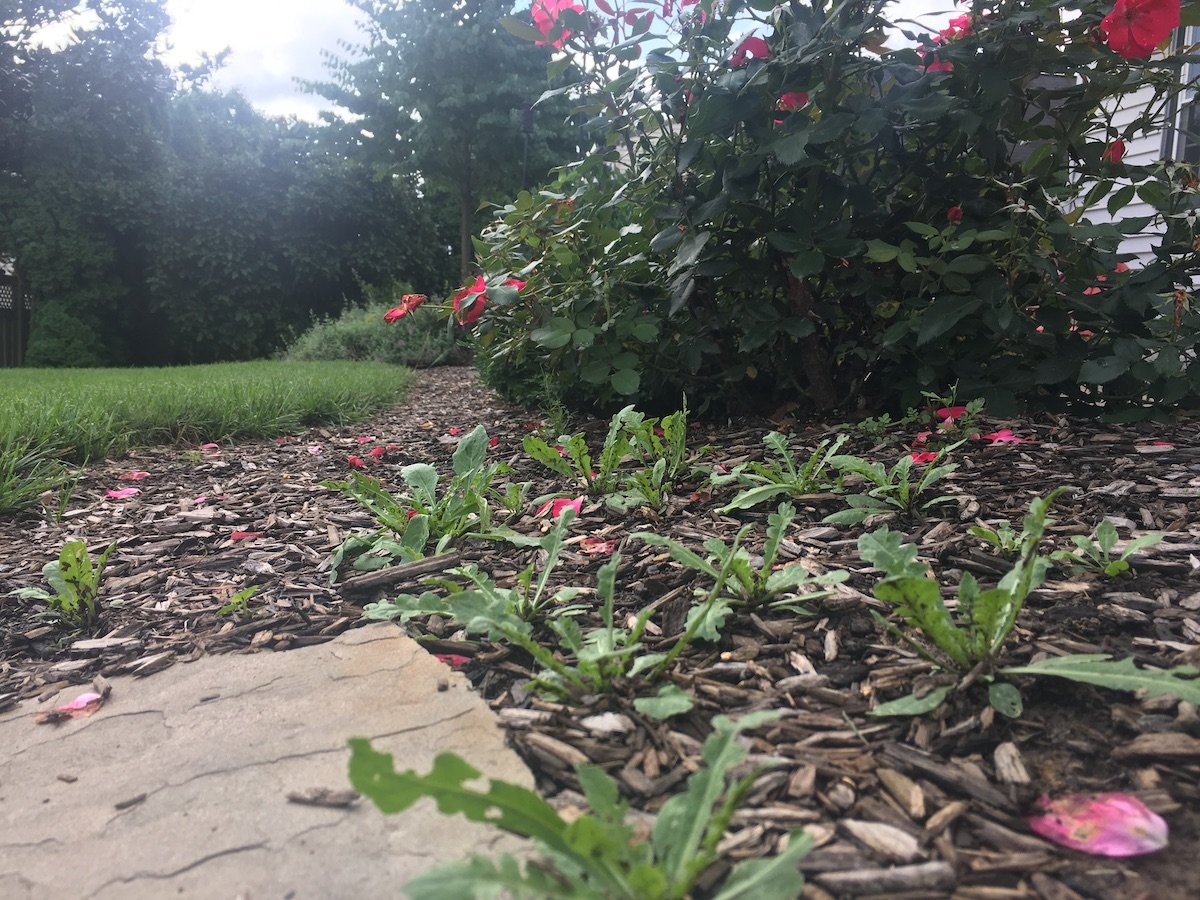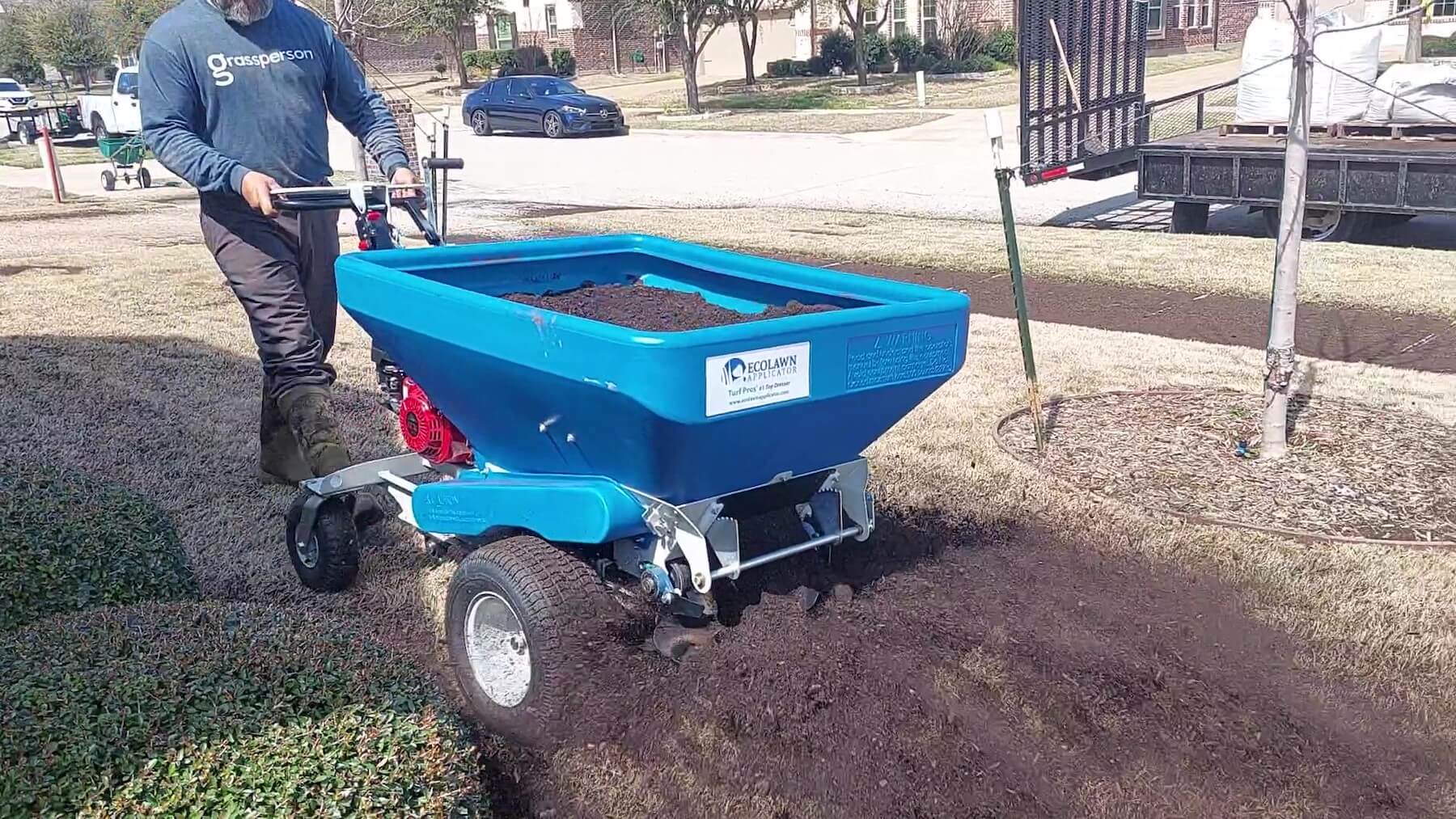
You probably already know that a fresh coat of mulch looks great in your landscape beds or around your trees and shrubs. Homeowners often choose to mulch because they know it can freshen up their landscape and provide curb appeal and wow factor.
But did you know that when you put down mulch, there are other benefits to anticipate.
In this article, we’ll cover some of the key benefits of mulching in Texas. These include:
Let’s look at each of these benefits and what you should know about them.
There’s no doubt that the aesthetic appeal of adding mulch is a key benefit. But let’s cover the other benefits you can expect.
Adding mulch to your plant beds can help suppress weeds. This is because it blocks weed seeds’ access to sunlight, which is needed for growth. It also creates another layer that young weeds have to “break through.”
While mulching can definitely play a role in weed suppression, we do still recommend proper bed prep to keep weeds out of your beds. You should make sure that all visible weeds are pulled before mulching.

At Grassperson, we can go a step beyond that, too. We also offer to apply a granular pre-emergent herbicide that will help further control future weeds.
It’s also important to understand how to properly mulch.
Mulch should be applied as a two-inch layer. In addition to preventing access to sunlight to any weed seeds already in the soil, you’re also creating a barrier for any weed seeds that get carried into the flower bed by minimizing contact with the soil.
Another benefit of mulching is that you’re supporting good soil health. That’s because mulch breaks down over time and adds nutrients back into the soil.
This is one of the key benefits of mulching as opposed to using stone. While there are some benefits to stone (like the fact that it doesn’t need to be replaced or maintained), it’s not going to do anything to deliver nutrients into your soil like mulch will.
As mulch breaks down, it has the nice benefit of adding nutrients and organic matter to the soil that plants need to thrive.

Another benefit you can expect when you put down mulch is water conservation. This is true for tree rings and mulched plant beds. Due to its ability to reduce evaporation, mulch helps keep your plants’ roots moist. That means that you may be able to reduce watering needs.

Mulch can also help regulate the temperature of your soil.
This is beneficial during different times of the year. Mulch helps keep plants warm in the winter by insulating the roots from wind and freezing temperatures and cool in the summer by protecting roots from the summer heat.

Mulch can also help with erosion management of your soil by preventing erosion due to wind and rain.
Of course, erosion issues are also often related to water problems. If you have a drainage problem on your property, it could still wash out your mulch. For instance, if you have a gutter that empties near your plant bed, you might be frustrated that your mulch is frequently washed away.
Being proactive with drainage and erosion control is a lot more cost effective in the long run. While a typical drain line, connected to a downspout and directed away from your landscaping is in the $500 to $1,000, replacing a landscape that has been decimated could easily cost thousands of dollars (plus a lot of hassles and headaches).

Finally, we also want to talk about the fact that mulch can be an excellent alternative in areas where you might be struggling to grow grass. Grass areas under trees, for instance, are notoriously thin or even bare. Grass does not grow well in the shade. But extending a tree mulch ring out in these areas can be a great option.
Similarly, extending a plant bed into shaded areas can be a great way to address spots in your yard where grass won’t grow well. There are plenty of shade-loving plants that should still perform well in these areas.

When talking about the benefits of mulching, it’s worth also talking about when to mulch. There can be different benefits of mulching depending on when you are doing it.
Ideally, we recommend mulching at least twice a year…in the spring and in the fall.
In the fall and winter, as temperatures dip some, mulch can insulate roots from the cold and the wind. This is also important as windy conditions can cause evaporation and dry your plants out (even when temperatures are less intense).
As we talked about previously, mulch also assists in inhibiting weed growth by creating a barrier that can be difficult for weeds to break through. By blocking weeds’ access to sunlight, they’ll have a hard time growing no matter what the season. It’s important to remember that weeds are not merely a spring and summer issue. Here in North Texas, we get lots of winter weeds, too. Given our year-round warm temperatures, the weeds never go away!

Many of our clients actually mulch a third time. The aesthetic benefits of keeping mulch looking fresh are also an important consideration.
Keep in mind that a second and third mulch is not going to cost the same as that initial mulching. We’re not taking it all out and re-mulching from scratch. Instead, we’re fluffing it up and adding a healthy top layer. For all of the benefits that you can gain, most homeowners decide it's worth investing a little bit more to have mulch spruced up a second or possibly even third time.
Mulching is one of those services that most lawn and landscaping companies offer. But as with any service, it’s important to recognize that some companies are going to do a better job than others.
While mulching may be easy enough to do, there are ways to cut corners and end up with sloppy results. Some companies even try to make more profit from the service by using a subpar mulch that’s not going to get you the same results as a high-quality product.
When you invest in professional mulching services, what you’re really looking to put your money toward is peace of mind that you’re going to continue to have the best-looking property on the block.
You don’t want to be bothered with what kind of mulch your provider is using or whether they’re taking the time to apply it in a professional way. You might not even want to worry about when to mulch. You just want to know that your landscape provider is doing what’s right for your property.
You also want to know that you’re going to gain all of the benefits talked about in this article. Making sure that mulch is applied properly will be key to your success. When you choose a professional service, you can feel confident you’ll get the most out of your mulch.

Ready to get the most out of your mulching service? Get a free quote and find out how you can get the best landscape on the block. Seriously, you deserve it.
These Stories on Landscape